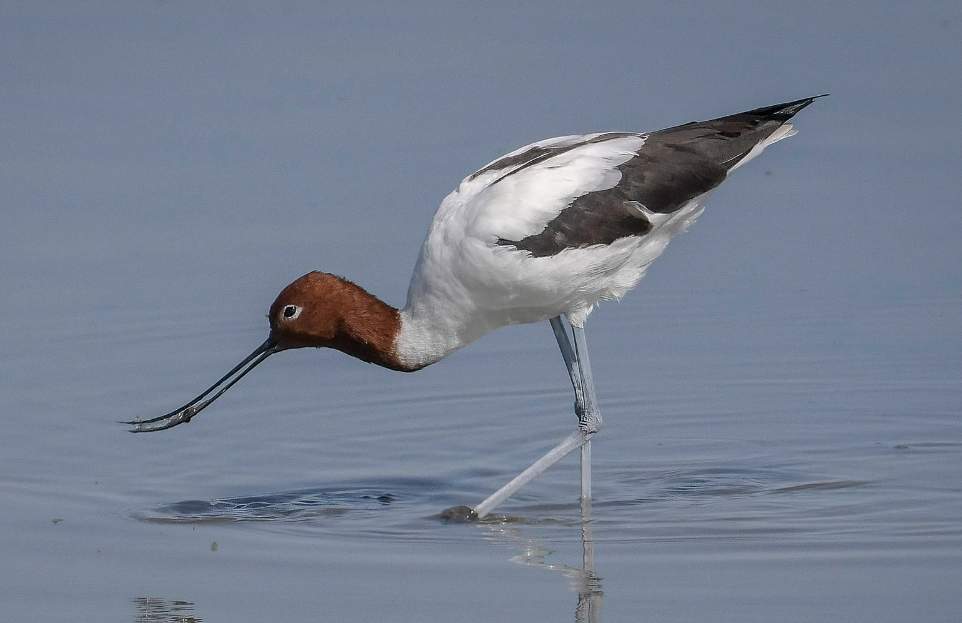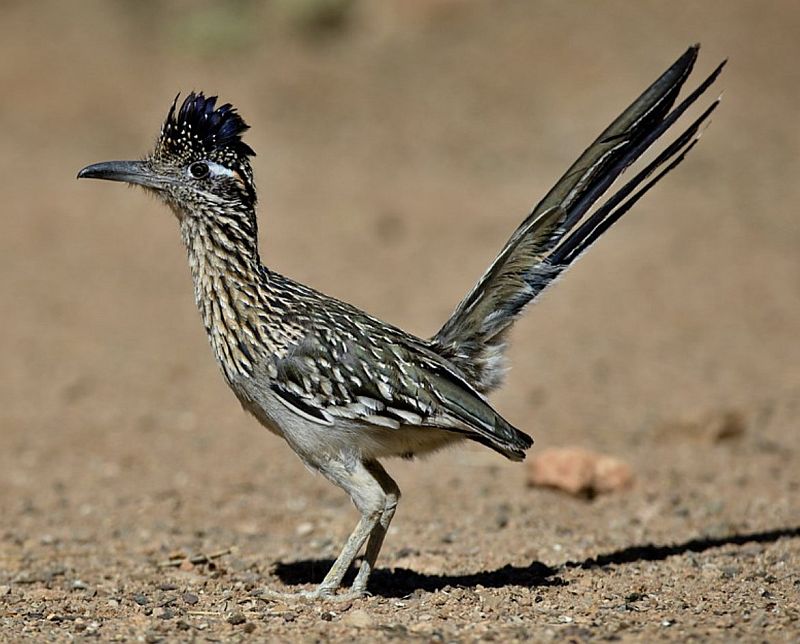Family: Red-necked Avocet (Recurvirostra novaehollandiae) belongs to the family Recurvirostridae.
Habitat: Red-necked Avocets have an upturned bill, similar to the cobbler’s awl of stilts. While its legs are long, like stilts, its toes are half-webbed, which facilitates swimming. In flight, its legs stretch beyond its tail as it flutters on rapid and shallow beating wings. Occasionally seeds are taken, as well as insects, worms, and molluscs.
There are dispersed aggregations of nesting birds. Birds bow, trample, dip their bills, and preen during pre-mating displays. Eventually, the male springs onto the female’s back and sinks, wings outstretched, while the female leans forward and jerks her head. As soon as young hatch, both sexes incubate them, and when they are small, they are brooded by both at night.
Their primary method of feeding is wading and sweeping their part-opened bills through shallow water or soft mud; sometimes they even stir with their bills. Stilts and stilt-like birds share their fragile slender elegance, but deep red heads and necks make them distinct. They enjoy socializing with stilts in all seasons and during all activities. During dry weather, it quickly migrates to coastal areas. It is usually very sedentary when the conditions are right.

Diet: As well as picking off prey, they also jab at it from an upright position in clear water. While learning to forage, young birds feed this way, but as their bills lengthen and curve up, they change to sweeping. In addition to feeding, roosting, resting, and flying in compact flocks of up to 100 birds, avocets rear a variety of tiny crustaceans that occur in small water bodies. Salty and brackish marshes and tidal inlets are their favorite habitats, and they range further inland when rains have filled the pans. It eats mostly aquatic insects and their larvae, such as brine shrimp, crustaceans, and seeds.
Identification: Both sexes are alike. Head and neck bright chestnut, with white eye-ring; head greyer in females. All body and tail white; inner scapulars dusky, outer white. The wings with outer flight feathers are dusky, inner white; lesser wings coverts are white, median, and greater coverts are dusky. The eyes are red-brown. The bill is black. The legs are pale leaden. The immature bird’s head and neck are pallid chestnut-white. The downy young are pale grey above, sparsely speckled with black, forming a pair of broken lines down the upper back and midline down the lower; white-tinged buff below. Small islands in lakes or flooded ground, or at the edge of swamps.
Nest & Breed: Nesting and breeding occur between August and December, depending on climatic conditions. Nest is a depression in the ground lined with scraps of swamp vegetation. They are usually found on small islands in lakes or flooded ground, or on the edges of swamps.

Eggs: There are usually four eggs; olive-brown to pale brown heavily spotted and blotched with dark brown and grey; oval to pyriform, about 48 x 33 mm. There are probably 3-4 weeks of incubation for both sexes. In a circle, the eggs are arranged with the acute ends toward the center.
Distribution: A region of brackish and saline surface waters across southern and central Australia west of the Great Dividing Range. The species is rare on the east and north coasts and a vagrant in Tasmania and New Zealand. Because of the high variation in rainfall, it is highly nomadic, moving around the continent in search of suitable habitat.
Other Names: It is also known as Australian Avocet, Cobbler, Trumpeter, and Painted Lady.
Size: The bird measures about 410-450 mm in length. The bird’s wing length is 22.4 to 23 cm, tail length is 7.9 to 8.8 cm, and bill length is 8.2 to 9.5 cm, and it weighs around 310 grams.
Taxonomy: Red-necked avocets were described by French naturalist Louis Jean Pierre Vieillot in 1816.
Races: There are no races.
Call: Different trumpeting whistles toot-toot in contact with nest colonies. The yelping note is usually reserved for warning calls rather than contact calls.
Predators: Red-necked avocets have few predators because of their size. Red foxes and feral cats are examples of introduced animals that take chicks and eggs. Inland breeding areas may be reduced by droughts caused by climate change.
Read More – Avocet – A Rare British Bird







